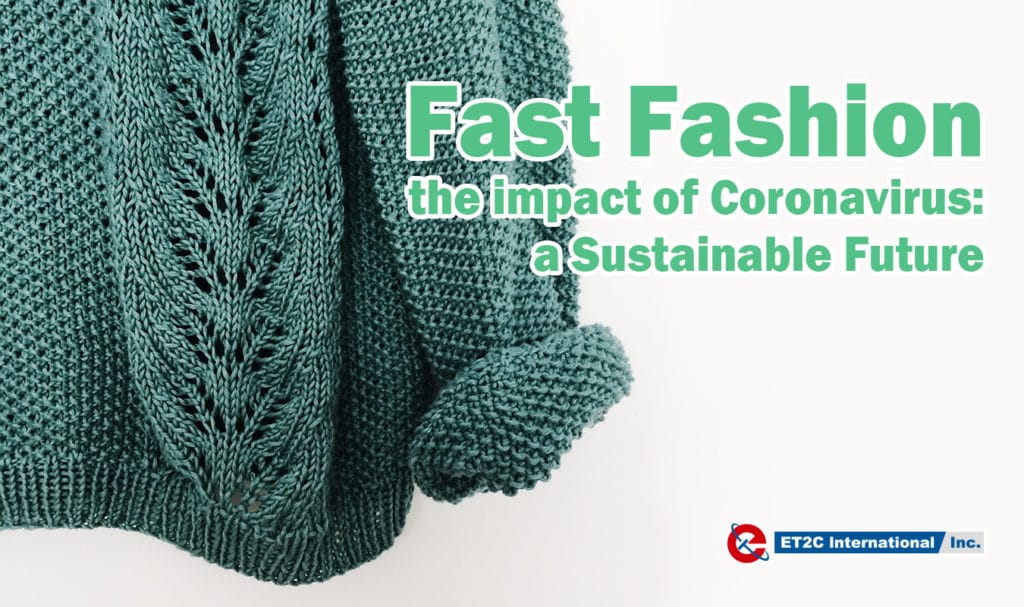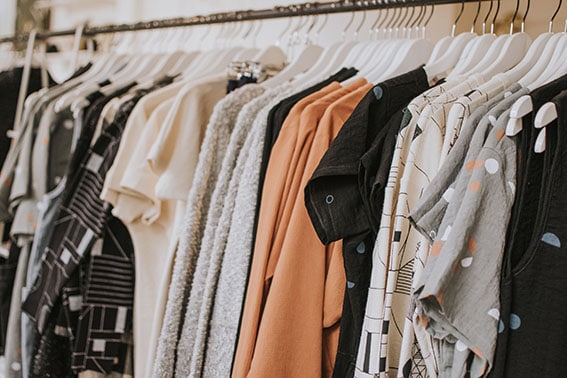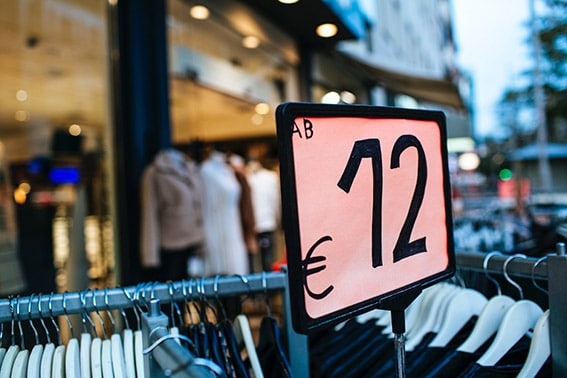
The coronavirus pandemic has firmly cast the spotlight on the fashion industry. As countries and markets have gone into lockdown worldwide, the fashion industry from trade shows to retailers has been impacted.
Digital platforms have become the norm now across many aspects of our daily lives. Even fashion shows in Shanghai, Tokyo and Moscow all followed suit and went digital. Some of the upcoming collections at the largest fashion capitals might be projected through a screen in this new Covid-existence.
The impact on fast fashion
Likewise, the global pandemic had a dramatic impact on fast fashion at a retail level. Consumption has declined as stores have been shuttered. Consumers have thought twice about buying clothes given the limit to the amount of socializing we have been experiencing.
Undoubtedly, we are reconsidering our past behaviours; how we spend our money. We have discussed before the impact that the fashion industry has on the environment, but has this pandemic accelerated this change?

A Shifting Manufacturing Landscape
One glaring point this pandemic has highlighted as markets went into lockdown was the dramatic and visible drop in greenhouse gases as factories were forced to shut their gates (appreciate this is not solely to do with manufacturing, or the garment sector specifically, but still serves to make the point). The United Nationals Alliance for Sustainable Fashion estimates that the fashion industry accounts for 8-10% of the world’s greenhouse gas emissions. We can visibly see our impact as consumers on the environment across global media outlets.
Challenges or opportunities?
From a product perspective, if one looks back up the supply chain, the Garment industry since the 1970s has largely been manufacturing where cheap labour can be found. Western Brands looked to scale their offering using low cost labour. These markets, the manufacturers and (importantly) their workers now sit idle. We have previously used the example of Bangladesh. Its garment manufacturing industry (84% of all exports) decimated during this pandemic. This demand shock has caused an economic tsunami. Can some of the medium size operators continue to survive? Will they want to take on orders for clients that caused them significant financial losses? The likely outcome, in the absence of any consequential local Government intervention in these Asian markets, is consolidation across the garment manufacturing sector. It may be therefore that with less competition and greater power with the suppliers (around client selection) costs start on an upward trend.
Fast Fashion & The Consumer
The process of making one cotton shirt emits approximately 5 kilograms of carbon dioxide and 1,750 litres of water. The vast majority of consumers are not aware of this nor would it have any impact on past buying decisions. Price has always been a key element of any purchasing decision. But it also impacts how a particular garment is treated in the future. When a shirt costs $5, it is quickly seen as disposable. This combined with the Fast Fashion industry that sells billions of garments each year to provide their consumers with the latest trends from the fanfare and glamour of the catwalks, promotes the idea that clothes are disposable and encourage excessive waste.

Sustainability and more sustainable behaviour have been forced in front of even the most unwilling consumers. We know that Sustainability comes at a cost and this has long been the balance that Brands have struggled to manage. And with each step back to normality, consumer mindsets and shopping habits will change.
A Sustainable Future
This pandemic, for all the pain and suffering, has potentially put the breaks on the beast of consumerism, which has been guzzling up the world’s resources at an unsustainable rate over the past 30 years. This is not to say that Fashion does not have a future. Certainly, we have always looked to express ourselves and clothing is fundamental to this. But, perhaps this has given fashion retailers the opportunity they needed to invest more in sustainable (more expensive) practices like upcycling and the use of more sustainable materials such as Pinatex (made from waste Pineapple leaf). Sustainability reports are already a central part of large retailers’ annual reports and one would now expect some of their ambitions to be accelerated.

Help from the Fashion Industry
Whilst we wait for lockdowns to be relaxed, it is notable that fashion houses and retailers are doing their bit to help prevent the spread of this virus. Prophetically, Burberry already had face masks on their catwalk towards the end of 2019, but the face mask has begun integrating itself into mainstream culture. Also, a lot of fashion houses are now making and selling versions of cloth masks for this new Covid-19 reality. Let’s hope that this is not a trend that needs to remain for the long term.
At ET2C, we are here to help our clients across multiple categories and markets. For example, we are currently producing a range of Cloth Masks to meet the world’s needs and to combat this deadly virus. For all enquiries, please contact us for more information at contact@et2cint.com.







